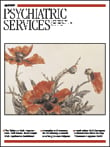In his newest book, American Mania: When More Is Not Enough, Peter C. Whybrow, M.D., bases his argument about the dangers of current American society upon an innovative and interesting premise. He uses his expertise as director of the Neuropsychiatric Institute and as professor of psychiatry at the University of California, Los Angeles, to compare the rise and fall of the quality of life in America with the cycles evident in bipolar disorder. He views the American search for happiness as having been "hijacked by a discomforting and frenzied activity … reminiscent of mania," and his stated goal in this book is to provide the reader with the tools necessary to "make conscious life choices that can mitigate the strain of our American mania." He achieves this goal through intertwining basic philosophies about society with studies of human neurochemistry.
Whybrow's book is divided roughly into thirds, with each third devoted to a different aspect of his argument. In the first third of the book, he explains his proposal that commerce and resultant personal debt have caused the sacrifice of time for money. Although this may not be a new idea, the way Whybrow links this with the origin of American society as migrants is an interesting twist. The theme of how American society differs from other modern societies in terms of both behavior and genetics, because of its migrant origins, is a theme he explicates throughout the book. The early pages of this section are devoted to a somewhat lengthy explanation of Adam Smith's theory of economics as it pertains to American society. I found this somewhat difficult reading, but the rest of the section is fascinating, particularly in its discussion of the dopamine reward system as it pertains to the natural selection of migrants for risk-taking and novelty-seeking behaviors.
The second and third sections of the book discuss the paradox of American society as a place of privilege in the world, yet abounding in high stress and resultant ill health. Whybrow compellingly compares the cycle of hypomania, mania, and depression to the rise and fall of e-commerce and the current dissatisfaction of many Americans today. I particularly enjoyed his observation that in the excesses of American society, "There's no automatic shut-off when the gas tank is full," so we must learn to use "mindful awareness" in order to avoid the "mania" caused by excessive wants. Whybrow's prescription includes being mindful of time, of technology, of natural appetites, and of balancing activity and exercise. These are again not new ideas, but the way he interweaves them with neurobiology is very interesting for those of a scientific bent.
This book does not have practical clinical application in treating patients, but it will be a worthwhile read for anyone who is interested in neuroscience and in the creation of the American society in which we live today. The prose is clear and concise, yet very creatively descriptive and easily readable. I have been inspired by this book to read some of this author's earlier works.

